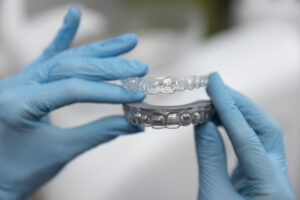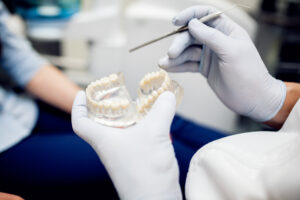Dentistry may seem complicated, but a closer look at the dental office reveals a set of simple yet essential instruments. Each tool has a specific job, making every dental visit smoother and more effective. This article looks into the most commonly used dental tools, from the humble mirror to the complex scaler.
The Essential Tools that Dentists Use
No dental checkup would be possible without a set of basic instruments. These tools make it easier for dentists to check out, diagnose, and treat their patients.
The Dental Mirror
The dental mirror is one of the most well-known tools that dentists use. This small round mirror has a metal handle. Dentists use it to see inside the mouth, particularly in difficult-to-reach areas such as the back of the teeth and gums. The mirror helps spot cavities, plaque, and other problems without causing discomfort to the patient.
Why Dental Mirrors Matter
- Better visibility: The mirror reflects light and gives dentists a clear view.
- Less discomfort: Dentists can see all parts of the mouth without having to move the patient’s head or jaws around.
The Explorer and Probe
Often called the “sickle probe,” the dental explorer is a sharp-pointed tool. Dentists use it to check for soft spots, cavities, and other issues on the tooth surface. The probe is essential for detecting early signs of decay.
How the Probe Works
- Finds decay: The sharp tip feels for sticky or soft areas that could be cavities.
- Checks gum health: Probes can also measure the depth of gum pockets, helping spot gum disease early.
Cotton Pliers
Cotton pliers look like tweezers. Dentists use them to place and remove cotton rolls, gauze, or other small items in the mouth. They also help keep the area dry during procedures.
Saliva Ejector
A dry working area is important in dental care. The saliva ejector is a small, flexible suction tube that removes excess saliva and water during treatments. This helps keep the dentist’s view clear and the patient more comfortable.
Advanced Tools for Cleaning and Treatment
Alongside basic tools, dentists use more advanced instruments for cleaning and treating dental problems. Let’s look at these important tools that dentists use for oral care.
The Scaler
Brushing alone is ineffective for removing plaque and tartar from teeth. That’s where the scaler comes in. Dental scalers are metal tools with hooked ends, designed to scrape away hardened deposits from teeth.
Types of Scalers
- Manual scalers: Operated by hand to remove plaque from the tooth surface.
- Ultrasonic scalers: Use vibrations and water spray to break up tartar more efficiently.
The Dental Drill
The dental drill is one of the most vital tools that dentists use for restorative work. It helps remove decayed areas of a tooth before placing a filling.
What Makes Dental Drills Unique
- High speed: Dental drills spin very fast, allowing precise work.
- Multiple attachments: Dentists can swap out tips for different tasks, such as shaping a tooth or polishing a filling.
Suction Devices
Apart from the saliva ejector, high-volume suction tools help remove debris, water, and old filling materials during procedures. They keep the treatment area clean and prevent patients from swallowing particles.
Air and Water Syringe
The air-water syringe produces a fine mist of air, water, or both. It rinses the mouth, clears away debris, and keeps the teeth clean during treatment.
Why It’s Important
- Better cleaning: The syringe quickly washes away particles.
- Comfort: It helps soothe the mouth during longer treatments.
X-ray Machines
Dental X-ray machines are crucial for diagnosing issues that are not visible to the naked eye. X-rays show hidden cavities, bone loss, and impacted teeth. Modern digital X-rays are quick and safe.
Handheld X-ray Sensors
- Easy positioning: Small sensors capture images inside the mouth.
- Immediate results: Dentists can see the X-rays on a computer within seconds.
Specialized Tools for Procedures
Dentists also use a range of specialized tools for specific treatments, from fillings to root canals and extractions.
Forceps
Dental forceps are used to grip and extract teeth. They come in a variety of shapes that suit different teeth and circumstances.
Curettes
Curettes are like scalers but have a rounded end. They’re mainly used for cleaning under the gumline and removing tartar below the gum.
Composite Instruments
When dentists fill a cavity with tooth-colored resin, they use composite instruments. These help shape and smooth the filling material for a natural look and feel.
Amalgam Carrier
This tool transports silver amalgam filler to the prepared cavity. It allows dentists to place the filling accurately and efficiently.
Sterilization Tools: Keeping Everything Safe
Cleanliness is crucial in dentistry. Sterilization tools help prevent infections and ensure all equipment is safe for every patient.
Autoclave
An autoclave is an instrument that uses steam and pressure for sterilizing dental instruments. After every use, instruments go into the autoclave to kill germs and viruses.
Ultrasonic Cleaner
Before sterilization, dental tools are frequently cleaned with an ultrasonic cleaner. It uses high-frequency sound waves in water to shake off debris and buildup.
How Tools that Dentists Use Improve Patient Care
The right tools not only make a dentist’s work easier but also ensure every patient gets safe, thorough, and effective treatment.
Faster and More Accurate Diagnosis
Mirrors, explorers, and X-rays help dentists find problems early, even before a patient feels pain. Early detection often leads to simpler treatment and improved results.
Comfortable and Efficient Treatments
Modern tools, such as ultrasonic scalers and air-water syringes, make procedures faster and more comfortable. Patients spend less time in the chair and recover quickly.
Focus on Safety
Sterilization equipment and single-use items help prevent infections. Patients can trust that every instrument used in their mouth is clean and safe.
Tools That Keep Your Smile Bright
Dental care relies on a range of specialized instruments. The tools that dentists use—from simple mirrors to advanced scalers and X-ray machines—play a key role in maintaining oral health. Next time you visit your dentist, you’ll recognize many of these essential tools and know-how each one helps keep your smile healthy.





